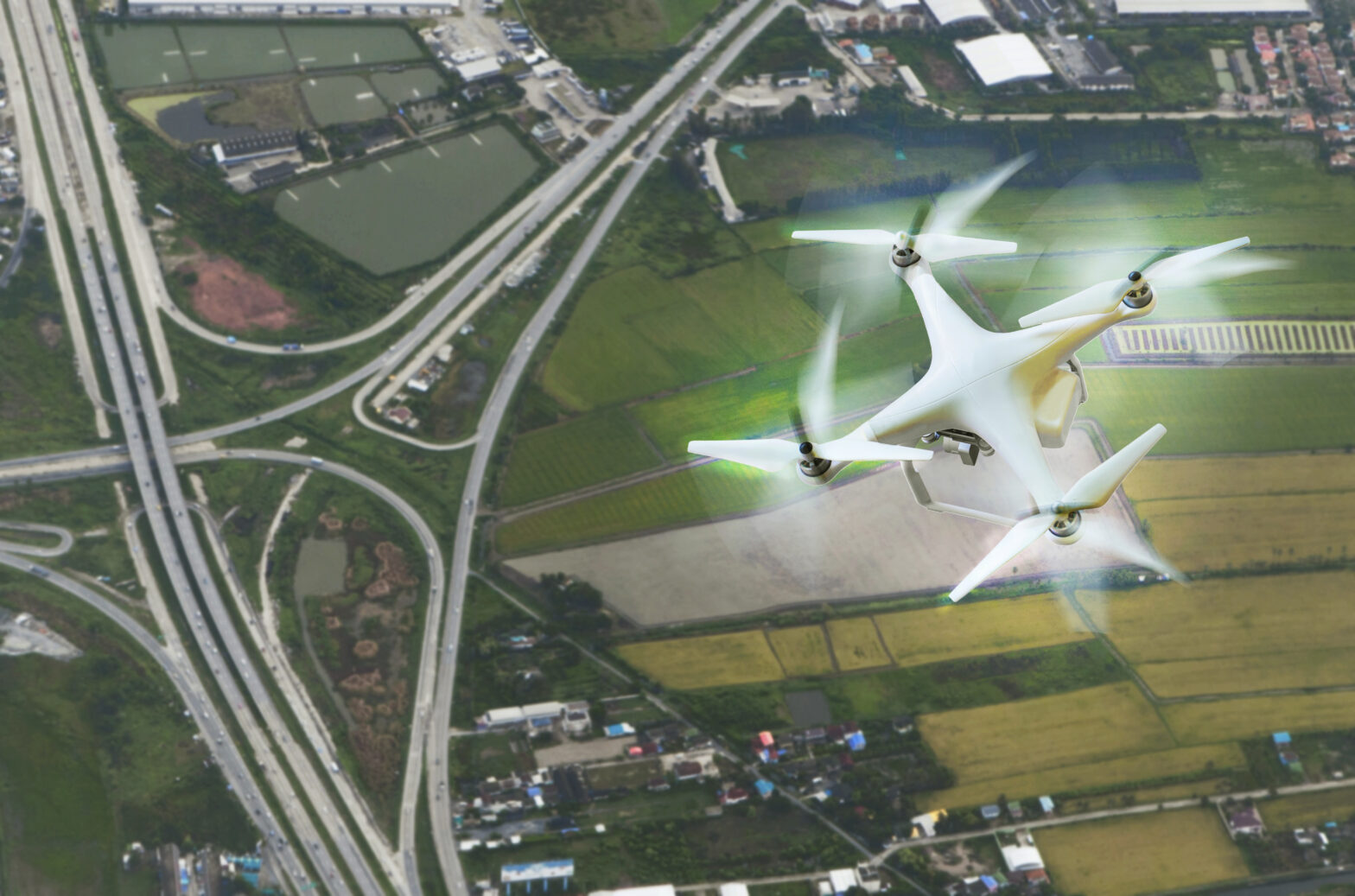Due to increased traffic congestion, the speed, efficiency, flexibility and financial viability of the traditional delivery process is not sustainable in the long-term. From the air pollution caused by vehicles, to the sheer quantity of wheels on our streets, retailers must work out how delivery fits into the future, particularly as world leaders take significant action to curtail the effects of motoring.
For instance, London Mayor Sadiq Khan is hoping to cut 3 million car journeys a day in the city, with a potential pay-per mile pricing.
>See also: Can drones be taken seriously in the supply chain?
All retailers know the ‘last leg’ of delivery has always been the priciest part of the process. Add this to the likes of congestion charges, and as customer delivery expectations grow, it becomes clear that standard truck-based delivery is losing viability, both environmentally and economically.
Amazon has been pouring in millions to pioneer a drone delivery service, recently announcing Drone ‘Beehives’ in cities. With these “multi-level fulfillment centers for unmanned aerial vehicles” – the online retailer will certainly help to ease traffic congestion in urban (and rural) areas.
However, enough of its ‘hives’ must be close enough to population centres in order to become more efficient than road-based delivery. While drones may appear to be the most efficient mode of delivery transportation, there will be many hurdles to overcome.
Just as a congested roads lead to delays and excessive pollution, a cluttered airspace can be dangerous. Meanwhile, the cost of drone delivery (which is currently only reserved for the premium Amazon Prime delivery service) will likely be sky-high, compared to ground-based delivery methods. As this cost will be passed onto customers, the clientele becomes limited and those who can’t afford the service will lose out.
>See also: Plane avoidance technology unveiled in new DJI drones
Meanwhile, with the accompanying noise pollution and visual blots on the skyline brought by six-foot drones frequenting neighbourhoods across the world, there’s also a social aspect to take into account.
With your neighbour’s daily impulse-buys being delivered by a very loud six-foot drone, the novelty would fade fast. Imagine the sound of a washing machine spinner at full-belt during unpredictable hours of the day, waking your kids, spooking your Staffie and generally causing a noise nuisance to the entire street.
Kensington and Chelsea council is currently consulting on how to clampdown on the noise caused by ‘supercars’, which it says have “a detrimental effect to the local community’s quality of life”.
If they are given the go ahead, the plans would make it a criminal offence for drivers to rev engines, play loud music or rapidly accelerate. It’s very likely that drones will face the same fate.
Interestingly, Mole Solutions is ignoring both road and air for a freight-only transport solution. Below-ground freight capsules will help to reduce road (and air) traffic congestion, as well as keeping out of sight. Dedicated underground networks will serve an important purpose, but fall short of those who require direct delivery.
Pelipod on the other hand, is seeking to cater specifically to businesses who need efficient, secure and direct delivery. Bypassing post offices, courier firms and depots, the firm is pioneering delivery pods which’ll travel straight to the destination.
>See also: Autonomous drones in the oil and gas industry
Integrated electronic systems will grant access to only authorised users, and provide proof of delivery. With this service aimed at institutions, however, consumers will miss out.
What then are the solutions for delivery vehicles that still rely on tyres and roads?
First, they must become carbon neutral to heavily reduce the environmental footprint of retailers. Before long, vehicles will become driverless, controlled only by AI and communicating with other road users through 5G mobile technology and streamlining processes by constantly feeding data into the Internet of Things (IoT).
Once delivery cars are driverless, they can become smaller and more efficient. Perhaps there will even be small lanes for freight/delivery vehicles.
Looking beyond the first incarnations of autonomous vehicles and towards the far-future of delivery, product delivery will eventually become digital.
25 years ago, the only way to send a document to someone was to have it physically delivered. Then came faxing; with a little help from technology, the same document could, just a few years later, be scattered into bits of information, sent across the world and re-assembled in a matter of minutes.
>See also: Are drones set to become the biggest threat to national security?
As technology improved, sending a document moved from minutes, to seconds to an instant. So, if delivery of physical goods continues to incrementally improve over time, it’s not unrealistic to imagine that your new mobile phone could one day not be physically sent to you at all.
Rather, it could be purchased via a digital download and, through some 3D printer/fax machine-hybrid, be re-assembled in your living room.
Of course, people can’t expect to see such an invention anytime soon. Technological advancements – despite accelerations in the digital age – are gradual. In the meantime, though, our lives could be transformed by autonomous delivery vehicles.
Sourced by William Sachiti, founder of robotics technology start-up, Academy of Robotics
The UK’s largest conference for tech leadership, TechLeaders Summit, returns on 14 September with 40+ top execs signed up to speak about the challenges and opportunities surrounding the most disruptive innovations facing the enterprise today. Secure your place at this prestigious summit by registering here







